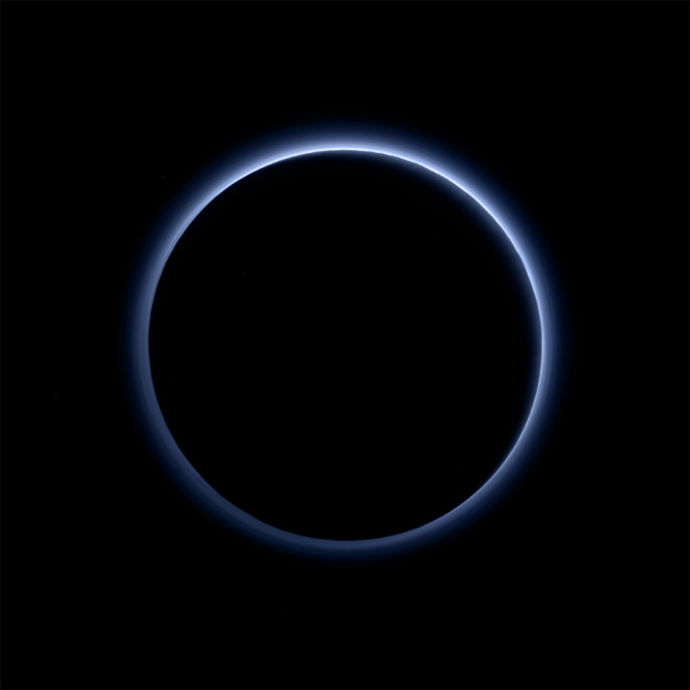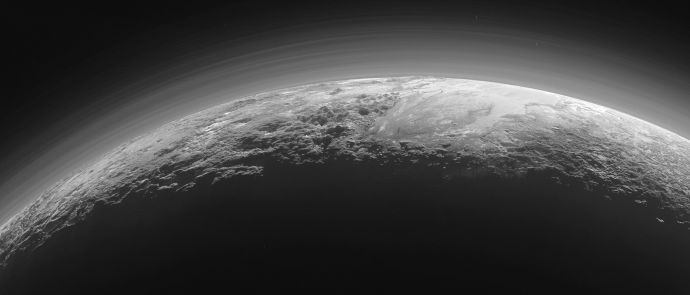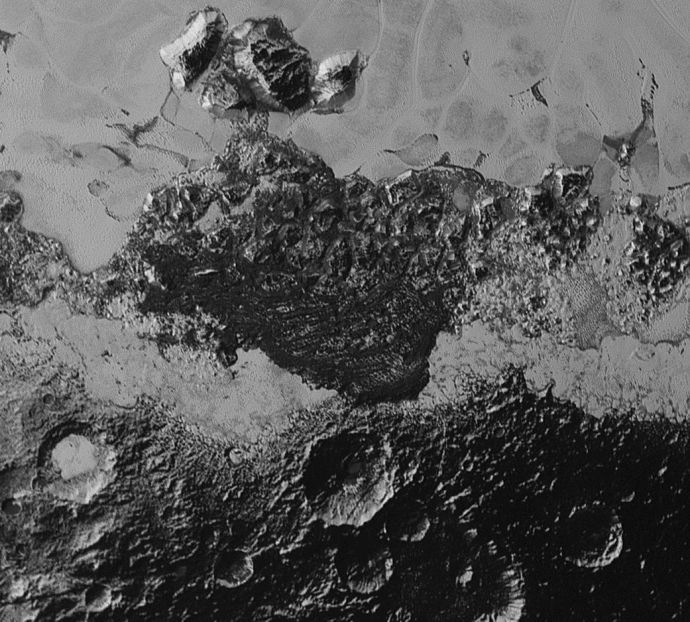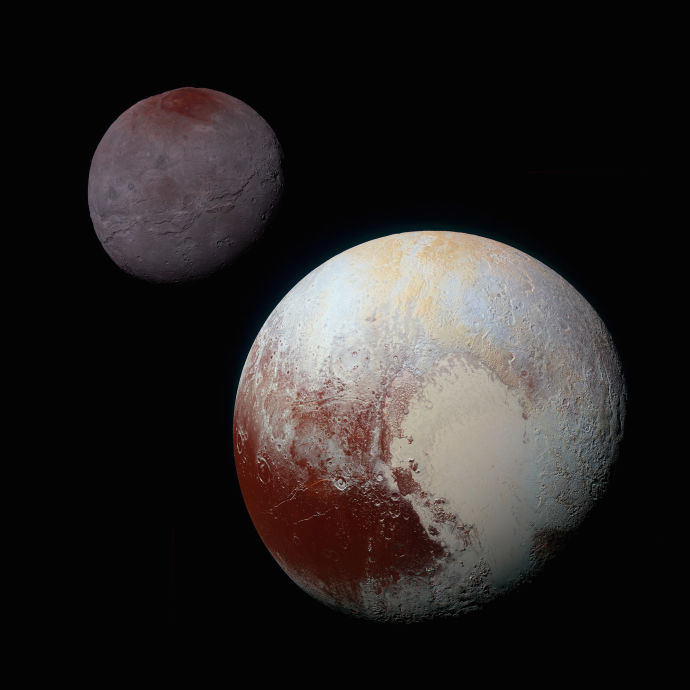What We’ve Learned About Pluto So Far
NASA’s New Horizons spacecraft concluded its tightly choreographed flyby of Pluto, back in July, with a pirouette, pointing its antenna toward Earth. Five hours later, the anxious team at mission control, in Maryland, received the first handful of images. Pluto, still smarting from its demotion to dwarf planet, nonetheless revealed itself to be a complex world, with a polar ice cap, rugged mountains, smooth plains, and reddish patches that recalled the surface of Mars
And then, just as the New Horizons scientists began their feverish speculation—Might the smoothness be the result of ongoing geological processes? Could the reddish patches be the organic material nicknamed “star tar,” a precursor to life?—the spacecraft fell silent again. For the next three weeks New Horizons carried out a series of planned observations, looking back at Pluto and its moons, pausing only occasionally to send home low-bandwidth information about the solar wind and space dust that it was encountering. Ninety-five per cent of the information that it had gathered during the flyby, including most of the high-resolution imagery, remained tantalizingly out of reach, trapped aboard the spacecraft’s digital recorders.
Since September, however, with Pluto squarely in its rearview mirror, New Horizons has returned tens of gigabits of data, including the spectacular images above. One particularly arresting example shows the dwarf planet backlit by the sun, a blue haze stretching for a thousand miles above its surface. Earth-based telescopes had detected an atmosphere as far back as 1988, but no one knew how far it extended—farther than our own—or what color it might be.* Whereas Earth’s sky appears blue because molecules of nitrogen in the air scatter incoming sunlight, the New Horizons team speculates that, on Pluto, the scattering is being done by small red and gray particles of star tar, more formally known as tholins. The same image also confirms that Pluto is a sphere. According to Francis Nimmo, a planetary scientist at the University of California, Santa Cruz, this may mean that, for much of its history, the dwarf planet had a relatively warm subsurface, and possibly even a liquid ocean. A planet of solid rock and ice, after billions of years of spinning, would have developed a bulge around its midriff, but Pluto has remained svelte.
At the same time, the New Horizons team has been counting the impact craters on the dwarf planet’s surface. Their tallies help them estimate the ages of various regions. Some, such as the dark, pockmarked Cthulhu Regio, bear the scars of heavy bombardment and are likely ancient; others are only moderately bumpy and hence probably middle-aged; still others, like the bright, smooth Sputnik Planum, are relatively young, no more than a few hundred million years old. This diversity suggests that Pluto must have been geologically active for much of its four-billion-year history—which raises the question of how these tectonic processes were powered. Scientists had previously assumed that an object as small and cold as Pluto could not still have the molten core or liquid subsurface that would be necessary to sustain that kind of movement, yet evidence of movement is everywhere. Two of the dwarf planet’s peaks, informally named Norgay Montes and Hillary Montes, are as much as eleven thousand feet tall, about the same size as Sicily’s Mt. Etna, and both their height and the steepness of their sides indicate that they may well be made of water ice, frozen as hard as rock. For such topography to form, the New Horizons science team concluded in its first paper on the flyby’s findings, would “require geological processes.” What’s more, these must have operated relatively recently, at least in geological terms, since the mountains seem to be only a hundred million years old, give or take.
Geologists have found other curiosities near Pluto’s south pole: two conical mountains with what appear to be circular craters in the middle. Jeff Moore, a planetary scientist at NASA’s Ames Research Center, suspects that they may be cryovolcanoes—volcanoes that spew slushy methane and nitrogen ice rather than molten rock. (Such icy volcanoes have been found on Neptune’s largest moon, Triton, where their activity is powered by the gravitational pull of the planet. On Pluto, where no such large neighbor exists, it is still unclear what might be fuelling volcanic activity.) Elsewhere on Pluto’s surface, these so-called exotic ices, which become solid at much lower temperatures than water, appear to show signs of glacial flow. In some of the high-resolution surface imagery, it’s possible to see a mosaic of blister-like bubbles covering the glimmering surface of Sputnik Planum. As Oliver White, of Ames, explained in a presentation at a recent American Astronomical Society conference, these may be water icebergs floating on a sea of slow-moving nitrogen ice.
Amid all the geologic and atmospheric fireworks, the New Horizons data has provided only one disappointment so far: there is no evidence that Pluto has a ring system. Nevertheless, its moons are as mysterious as Pluto itself, with tiny Nix, Styx, Hydra, and Kerberos spinning quite differently than the solar system’s other lunar bodies, which almost exclusively keep one face toward the planet that they rotate around. Hydra, on the other hand, spins on its own axis an astonishing eighty-nine times in the course of a single lap around Pluto.
So far NASA has received less than half of the data stored on the spacecraft’s recorders, meaning that the team will continue downloading and releasing fresh images for another year yet. No doubt plenty more surprises remain. Meanwhile, in October and November, the spacecraft set course for its next target, a thirty-mile-wide object named 2014 MU69, which is located in the Kuiper Belt, a disk of icy astronomical bodies beyond the orbit of Neptune. New Horizons is scheduled to arrive on January 1, 2019, to provide our first detailed look at what scientists expect to be quite a different place than Pluto—a more pristine and ancient remnant of the early solar system.
*An earlier version of this article misstated the year in which Pluto’s atmosphere was first detected.











